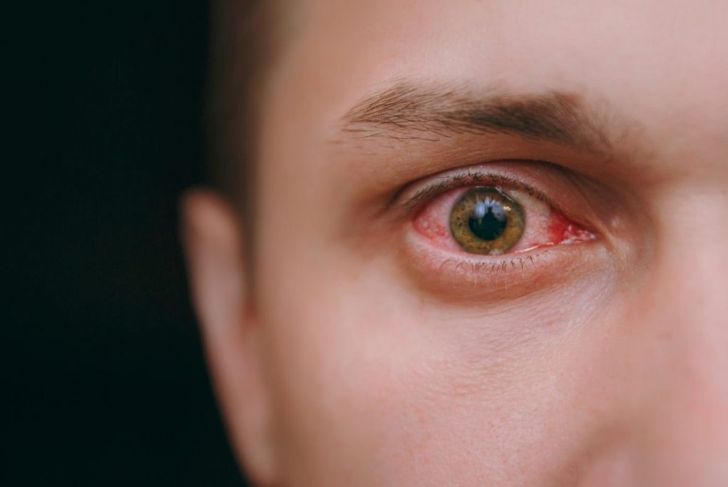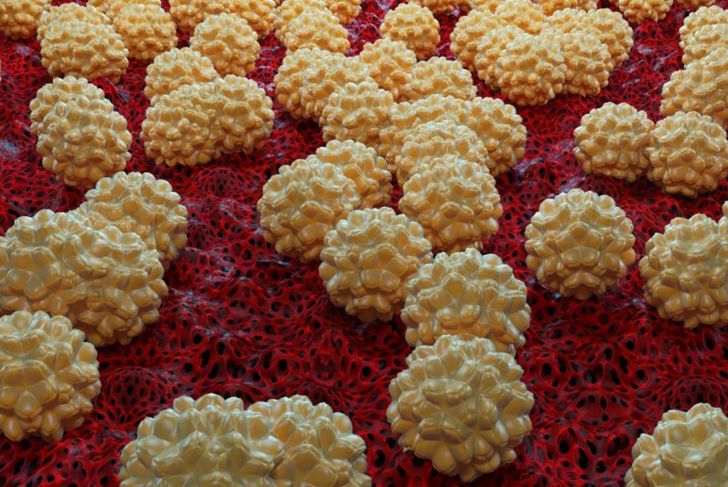Reiter’s syndrome or reactive arthritis is a form of arthritis that can affect other parts of the body, as well as the joints and spine commonly affected by arthritis. Although the condition is relatively uncommon, treatments do exist, and the prognosis is generally good.
It is Now Called Reactive Arthritis
Reiter’s syndrome has various names, but the most common one today is reactive arthritis, due to the condition’s development as a reaction to an infection elsewhere in the body. The medical name, seronegative spondyloarthropathy, identifies Reiter’s as one of a set of conditions that cause inflammation, especially in the joints where tendons attach to bones and parts of the spine.
It Has a Cluster of Symptoms
Reiter’s syndrome causes inflammation in various locations, so symptoms vary and often seem unrelated. The most common symptoms affect the urogenital tract, joints, and eyes. In the eyes, the syndrome normally appears as conjunctivitis, an inflammation of the membrane that covers the eyeball and eyelid. Some people may experience inflammation of the inner eye or uveitis. Arthritic symptoms include pain in the joints and spine.In the urogenital tract, the condition affects the prostate, urethra, and penis in men, and the fallopian tubes, vagina, and uterus in women. Men may experience discharge from the penis. Both sexes often have an increased need to urinate or a burning sensation when urinating.
Reiter’s Syndrome is Hard to Diagnose
There is no simple blood test to confirm Reiter’s syndrome, making it hard to diagnose. Additionally, affected individuals often don’t connect their symptoms, so when they see a doctor about back pain, they fail to mention conjunctivitis or the infection they recently had, which makes it difficult to see the connection. To reach a diagnosis, a doctor will first rule out other causes of arthritis. They may perform blood tests looking for signs of the infections that commonly cause Reiter’s syndrome, and ask for a medical history to identify flulike symptoms from the initial infection.
It is Associated with Infection
Reiter’s syndrome is a reaction to infection. Different infections can trigger the condition, and symptoms generally appear one to three weeks after the initial infection. The most common triggering infection is Chlamydia, which is acquired through sexual contact. Infections of the intestinal tract, such as salmonella, Shigella, Yersinia, and Campylobacter, can also cause the condition.
It Mostly Affects Men
Sexually active men aged 20-40 is the most common demographic diagnosed with Reiter’s syndrome. It is also associated with HIV. Three percent of men with a sexually transmitted disease will develop Reiter’s. Women and children who develop Reiter’s syndrome generally acquire the intestinal form of the disease and have milder symptoms. Most people who experience the triggering infections do not develop Reiter’s syndrome, perhaps because they lack the gene HLA-B27, which is present in 94 percent of people with the condition.
It’s Not Contagious
Reiter’s syndrome is not contagious, but the triggering infections are. Individuals can protect themselves from sexually transmitted infections by using condoms during intercourse. Similarly, ensuring food is handled correctly can stop contraction of the initial intestinal infection.
Treatment Depends on Symptoms
There is no cure for Reiter’s syndrome, so doctors will treat the symptoms. Treatments include bed rest, gentle exercise, non-steroidal anti-inflammatory drugs (NSAIDs), steroid injections or creams, and immunosuppressive medicines. In some cases, antibiotics are prescribed to treat the initial infection. For patients with chlamydia, lengthy antibiotic treatment can shorten the symptomatic period.
You May Have to see Different Doctors
Because of the wide range of symptoms, people with Reiter’s syndrome may see different doctors for treatment. A rheumatologist or arthritis specialist often treats joint-related symptoms. Depending on how the condition manifests, an ophthalmologist can treat eye symptoms, and a urologist or gynecologist can see to urogenital symptoms. An orthopedist may perform surgery in the case of severely damaged joints.
Reiter’s Syndrome has a Good Prognosis
Most people with Reiter’s syndrome recover fully within two to six months. Recurrence of symptoms is possible, and around 20 percent of people develop chronic arthritis, though the symptoms are mild and generally do not interfere with daily activities. A small percentage of people may develop complications including glaucoma, inflammation of the heart, deformities of the feet, and a stiffening of the vertebrae.
Research is Continuing
There is continuing research into the causes of Reiter’s syndrome and effective treatments for the condition. Some researchers are investigating the connection between the triggering infection and development of the disease, particularly why some people develop the condition and others do not. Other avenues of research include finding ways to locate the triggering infection in the body, and the effectiveness of combination treatments.

 Home
Home Health
Health Diet & Nutrition
Diet & Nutrition Living Well
Living Well More
More




















